In a valley in southeastern New York’s Catskill Mountains, the forest floor is buried in a thick layer of fallen leaves. High above them, the cross-hatched twigs of yellow birch, sugar maple, serviceberry, and beech are bare. A hemlock grows beside a cold creek, its branches of fragrant needles suspended over water that roars south, destined for the taps of New York City residents. An early warbler flits across the open space where the trees do not meet. Look carefully at your feet, because the first green points of wild ramps are emerging from a long dormancy that began last June. It is spring. And everyone wants to eat them.
Join us for a woodland immersion, a lesson in foraging ramps sustainably, a guide to buying ramps, and encouragement to grow your own. Forest-farming, and buying and selling ramp leaves only can help conserve this native resource.
Photography by Marie Viljoen.
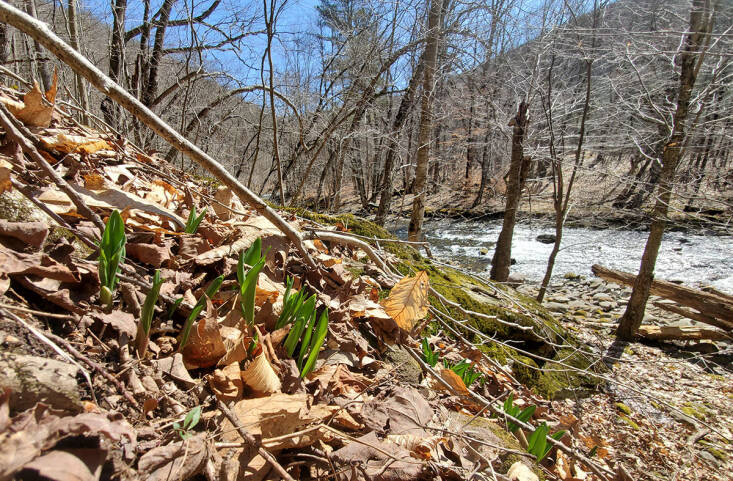
For many people, wild ramps (Allium tricoccum and subspecies) are the only feral food they will eat. These native American onions are currently sold whole—roots, bulb, and leaves— in bunches at springtime farmers’ markets and in tangled, choose-your-own heaps at supermarkets. Wild ramps are celebrated on restaurant menus and on social media. Their popularity is a problem: Their commercial collection for sale is leading to a decline in populations already under pressure from habitat loss due to development. Large-scale harvesting of ramps also affects their botanical neighbors—other native plants that share their sensitive habitat.
Understanding where and how ramps grow can encourage an appreciation of the consequences of our appetites and our social media-shares, and will hopefully lead to more sustainable harvesting practices and more ramp advocacy.
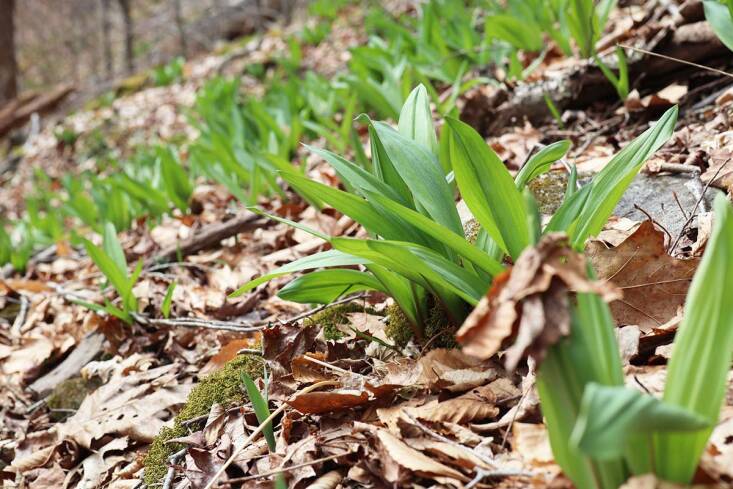
Ramps (also called wild leeks and wild onions) grow in deciduous hardwood forests in the eastern United States and Canada. They appear in early spring along with ferns and ephemeral wildflowers, which are called ephemeral for a reason: Their season is very short. These indigenous species have a limited time to form blooms, attract pollinators, set seed, and disperse that seed before becoming summer-dormant. When ramps are collected en masse for market, other species are vulnerable. Think of them as collateral damage.
Let’s meet these botanical neighbors. (And if they grow on your land or in your garden, you have ideal conditions for growing your own ramps.)
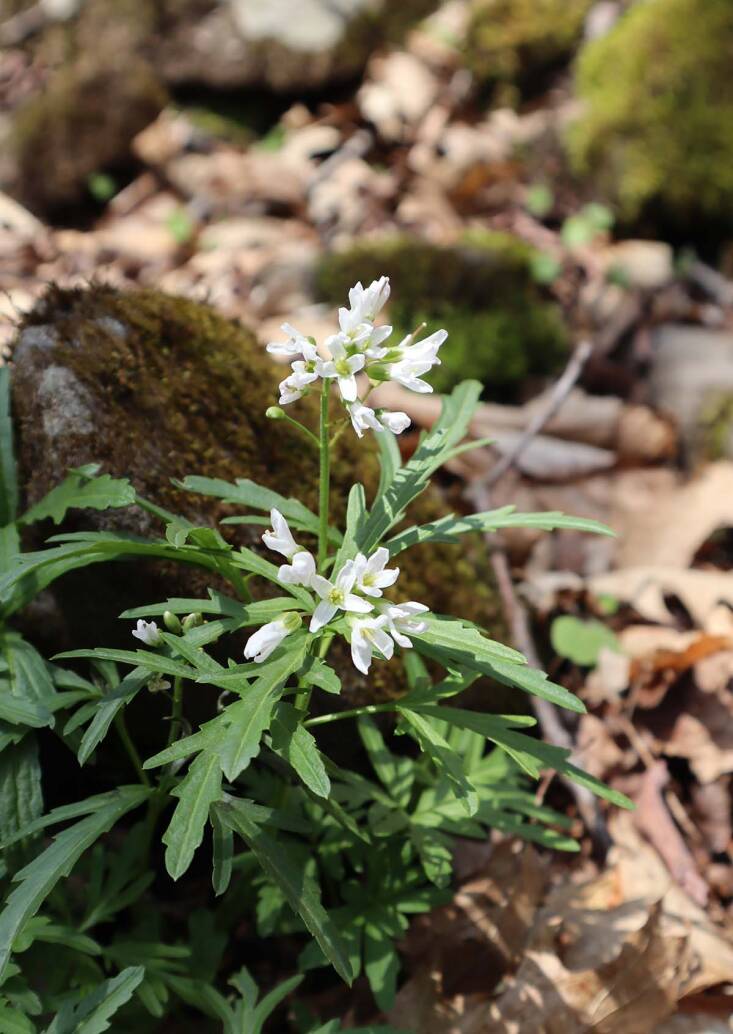
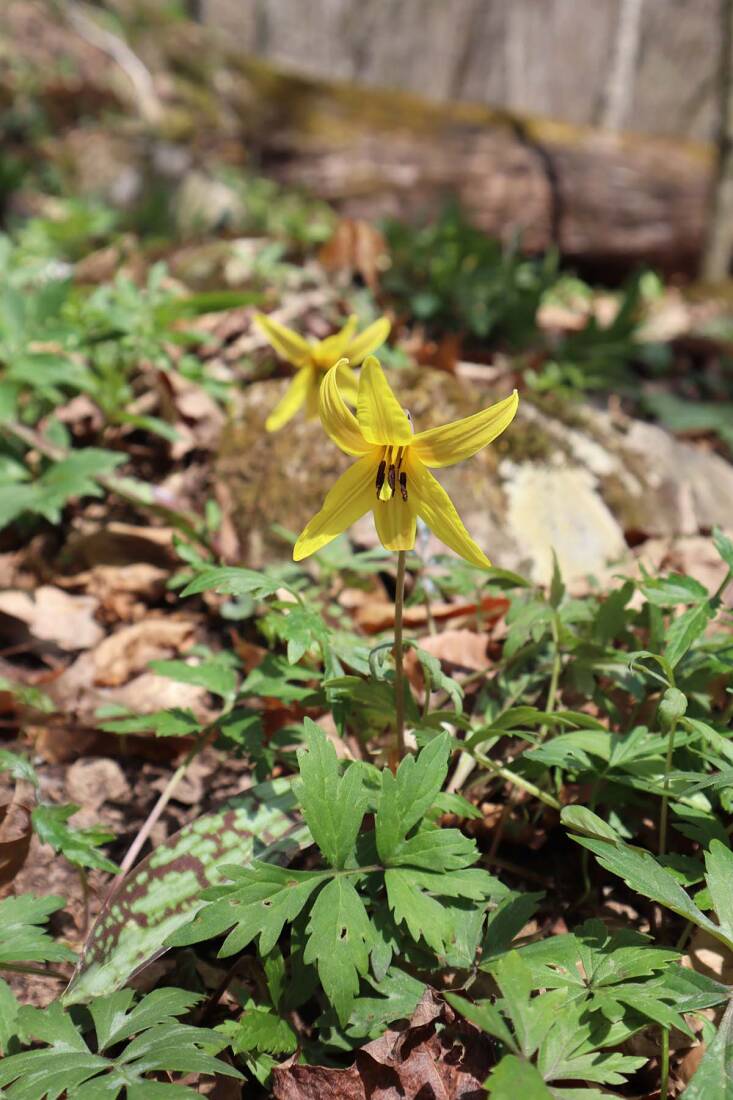
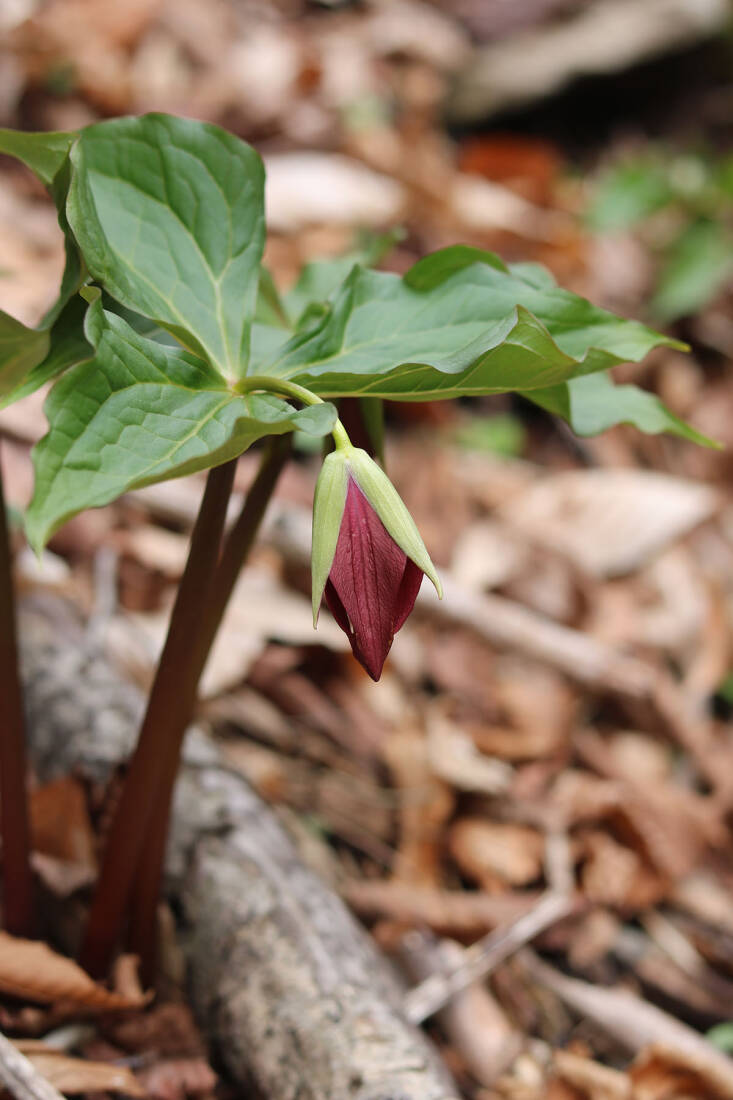
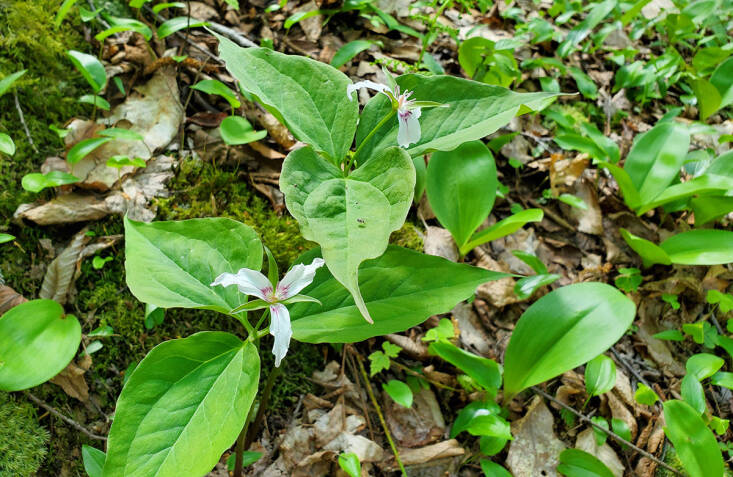
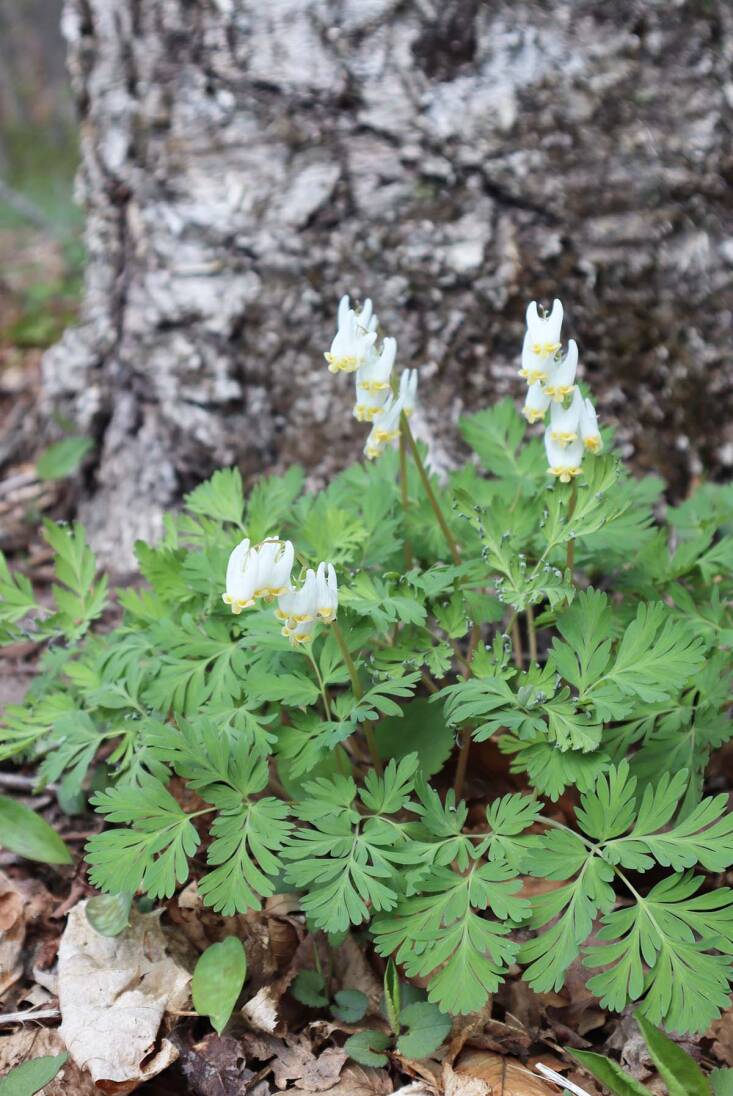
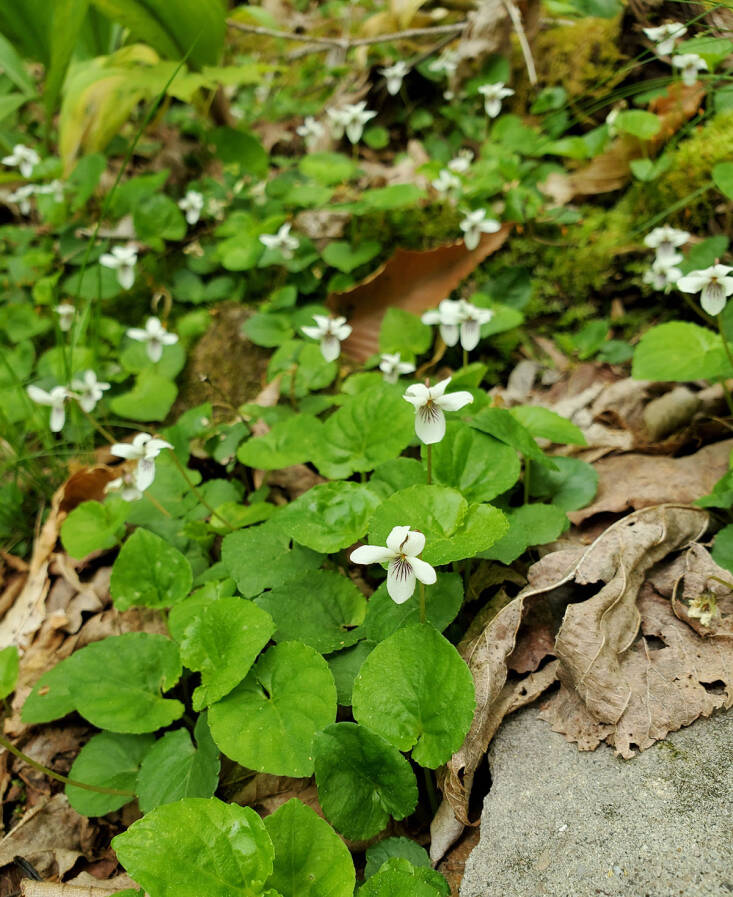
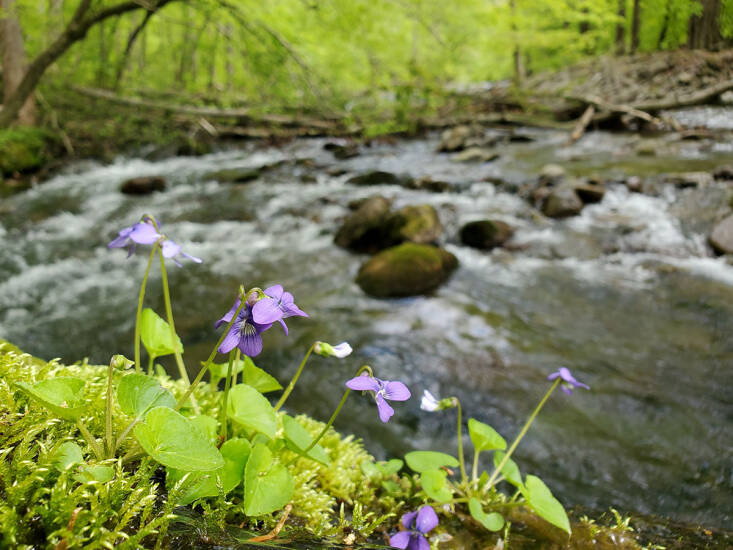
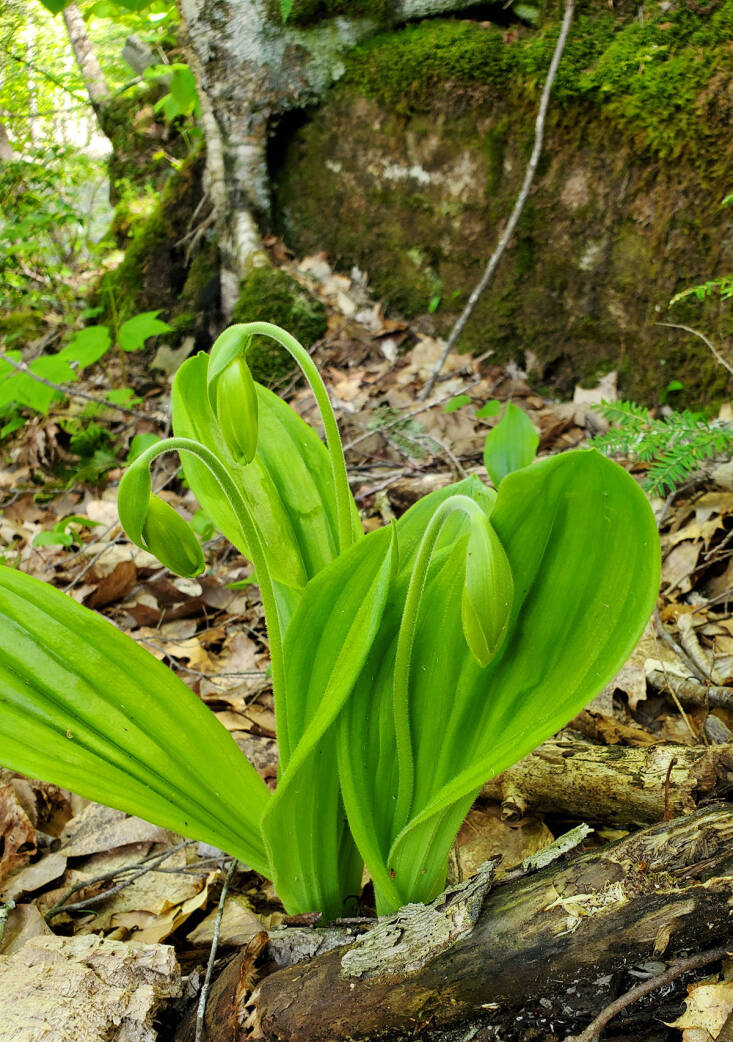
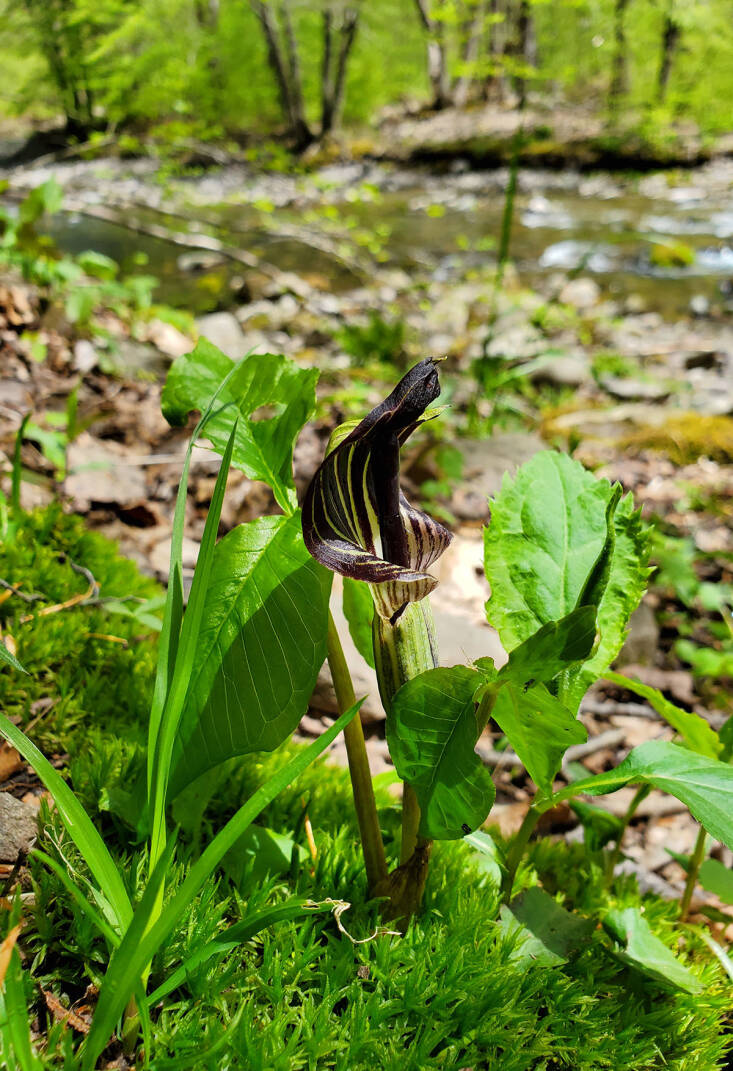
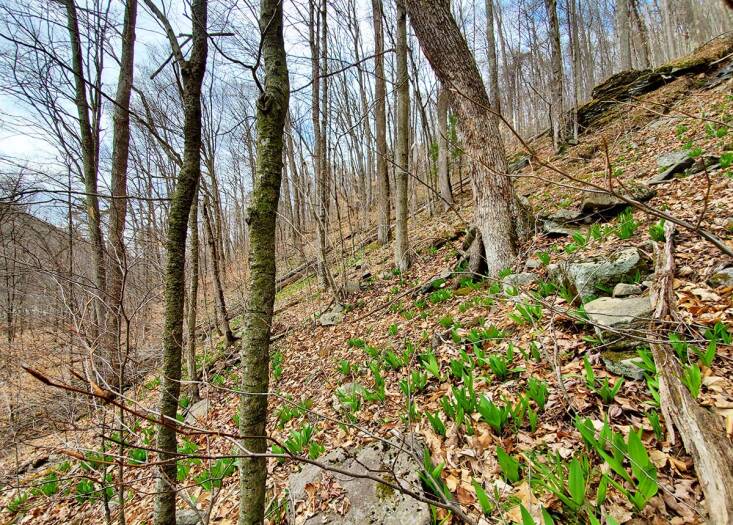
The ramp life cycle tip-toes through spring. Each mature bulb produces leaves that emerge before trees have leafed out. As a delicate canopy develops above them, ramp leaves grow broader in the high shade, feeding their underground bulbs.
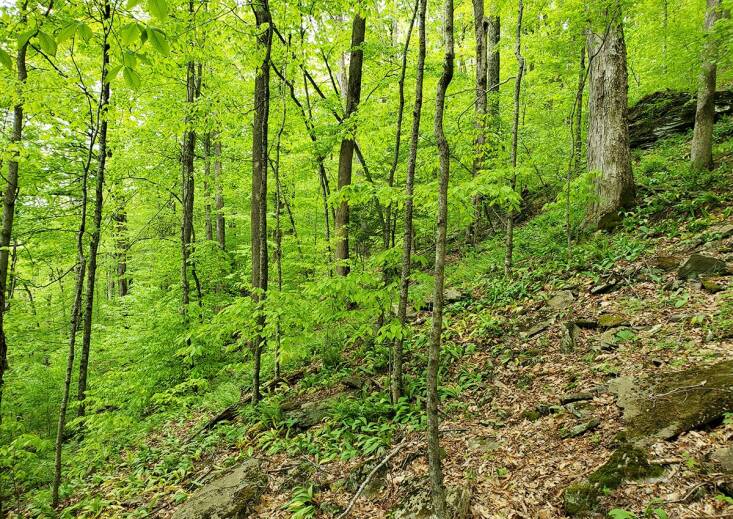
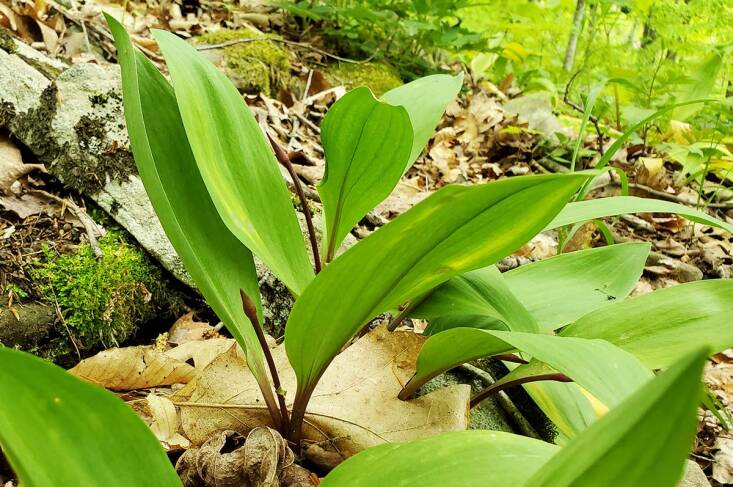
By the time ramp flowers bloom in early summer’s increasing heat, their leaves have collapsed. The little black seeds are dispersed in late summer to emerge the following year (or the year after) as a green thread. It will be years before that thread resembles its parent.
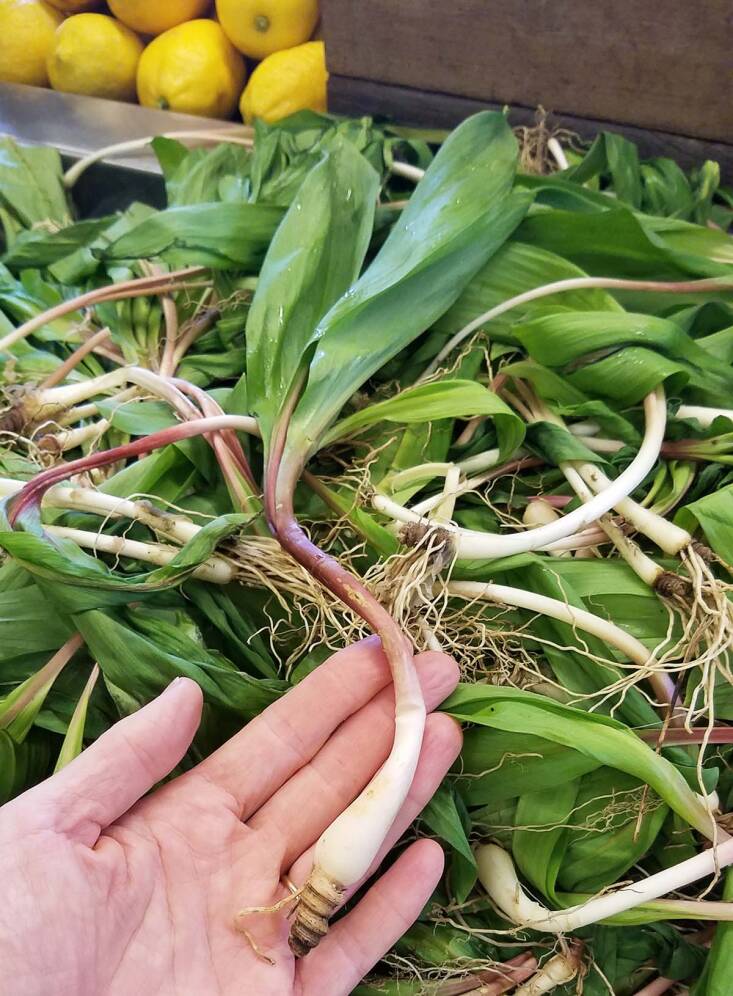
As well as growing from seed, ramps reproduce vegetatively, which is why you find them in familial clumps, with smaller bulbs around the most mature ones. New bulbils develop from root-like stolons that connect the clumps beneath the soil. Removing an entire clump with roots attached destroys this method of regeneration.
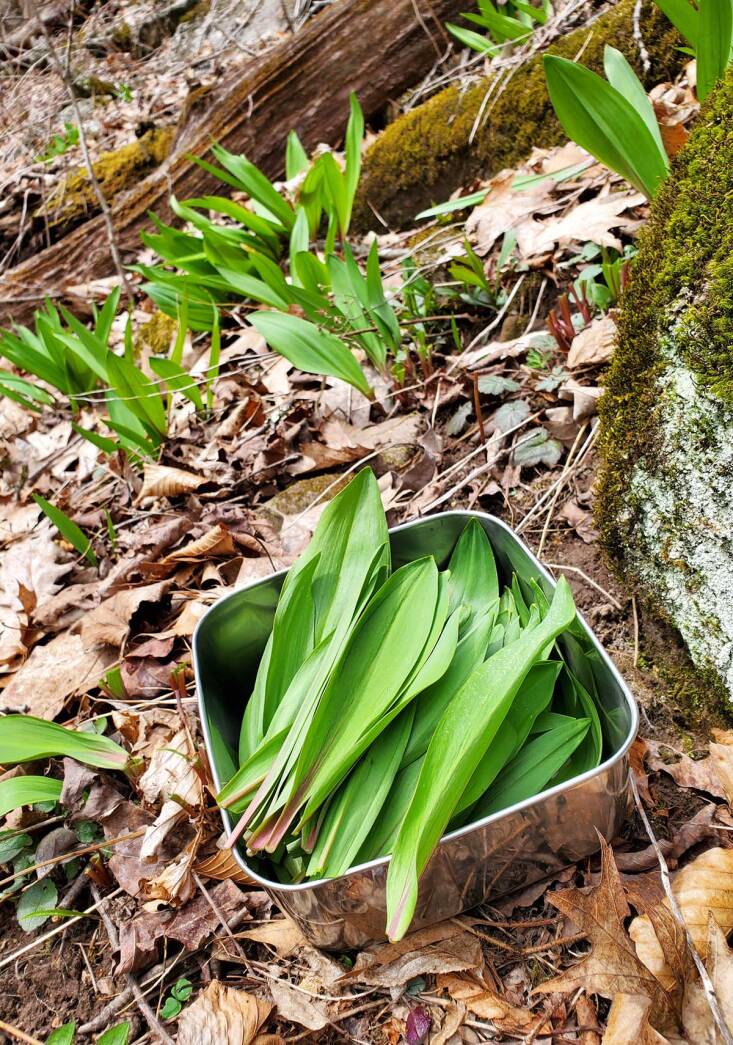
The ideal way to pick ramps is to cut leaves from a single plant in a clump or to collect one leaf from a plant (leaving the other leaf to keep feeding the bulb). If you do collect a bulb, pick the fattest in the clump, and slice it above the root. This is more time-consuming than yanking out the whole bulb, or digging up the whole clump, but its preferable to committing rampocide.
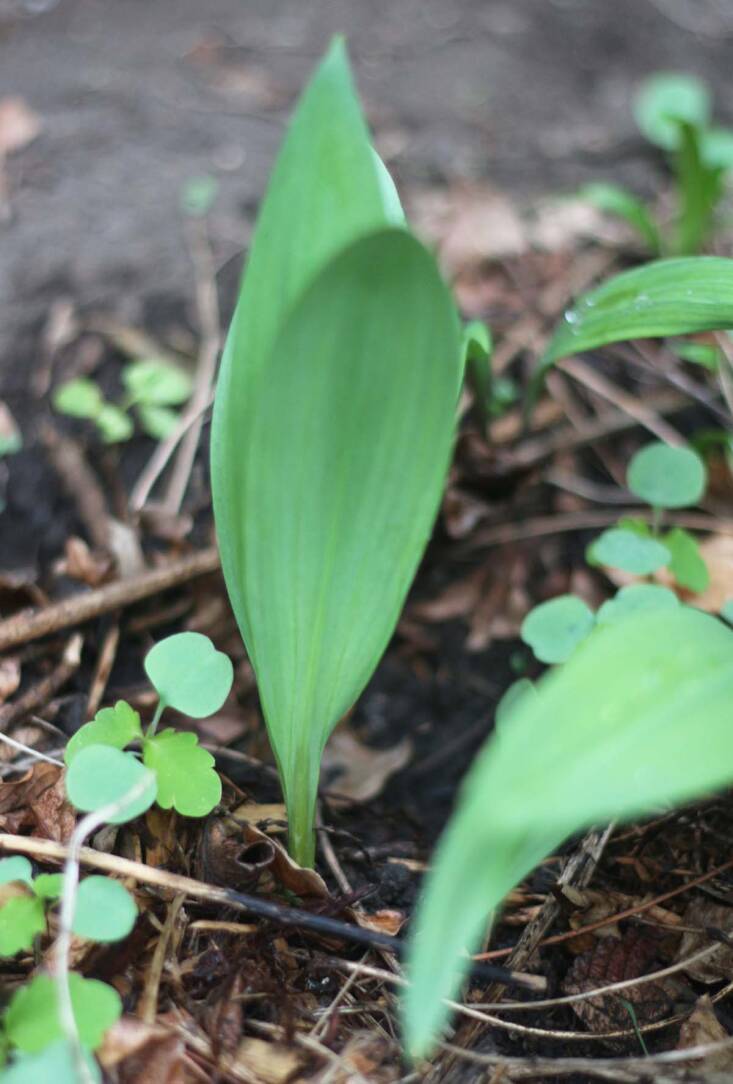
A long-term, sustainable way to enjoy ramps is to grow them at home or to forest-farm them for sale. At home, you can plant purchased wild ramps with roots after soaking them overnight in water. They require composted soil rich in organic matter (to mimic their woodland habitat), with spring sunlight and summer shade. After planting, their leaves may turn yellow quickly, but their roots should take. (My own experiments in a Brooklyn backyard yielded new ramp leaves the following spring. Now, I grow them in pots that receive summer shade.) If you grow ramps from seed, sow them in late summer or fall. And be patient. A common myth about growing ramps is that they need running water nearby. What they do need is ample moisture, especially if grown in southern or western exposure, but good drainage.
At market we need to rewire our desire: Learn more from your farmer about where their ramps grow, and how they harvest. Encourage vendors to sell #rampleavesonly. If you see piles of skinny ramps at supermarket, ask questions. If you’re eating out, confer with your server.
Shop mindfully, collect kindly, sell smartly, plant optimistically, eat sensibly, and consider the big ecological picture.
For more on sustainable gardening, see:
- Ask the Expert: 5 Tips for a Sustainable Garden from Landscape Architect Marian Boswall
- Monarch Butterflies Are Nearing Extinction: 5 Ways to Help
- The Garden Decoder: What Are Hybrid, Heirloom, and Open-Pollinated Seeds?
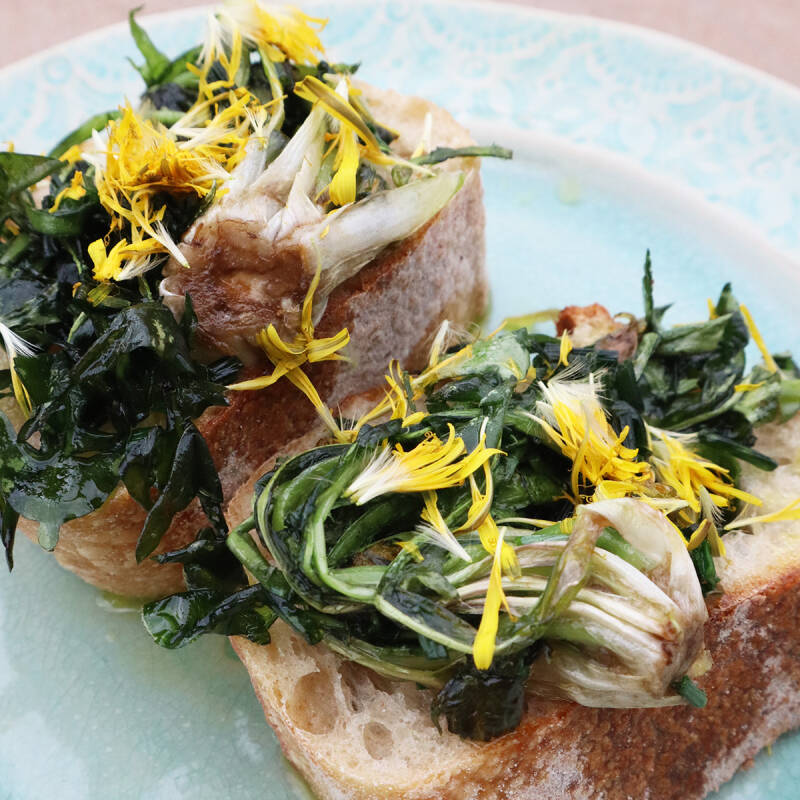
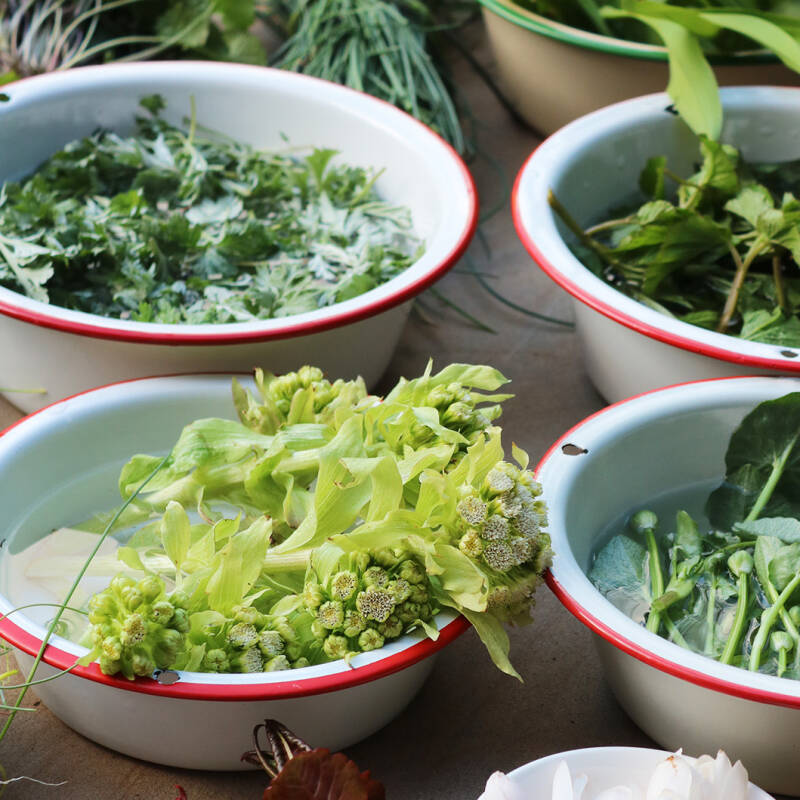
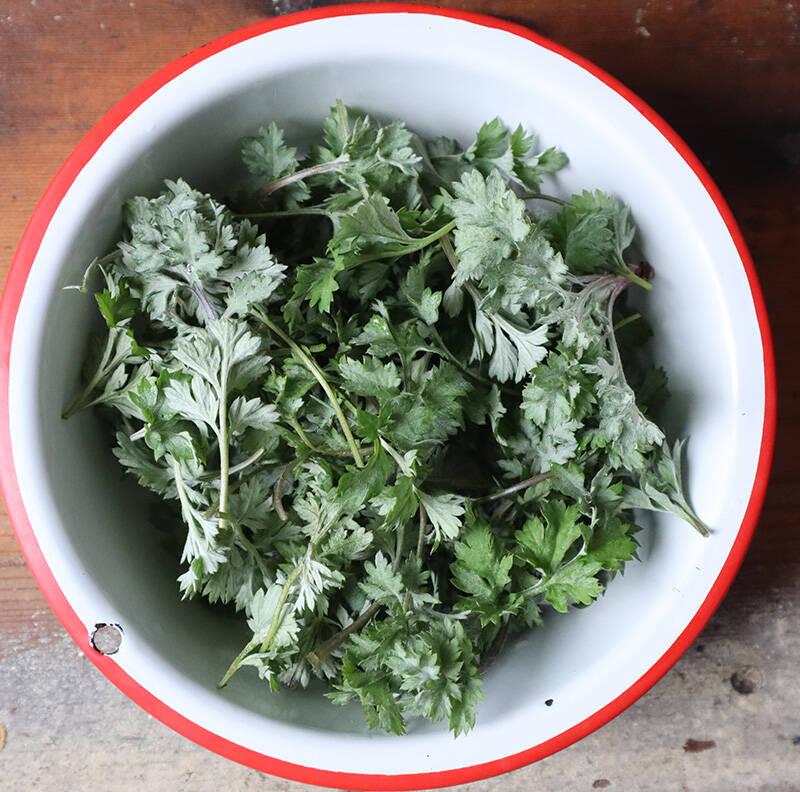



Have a Question or Comment About This Post?
Join the conversation